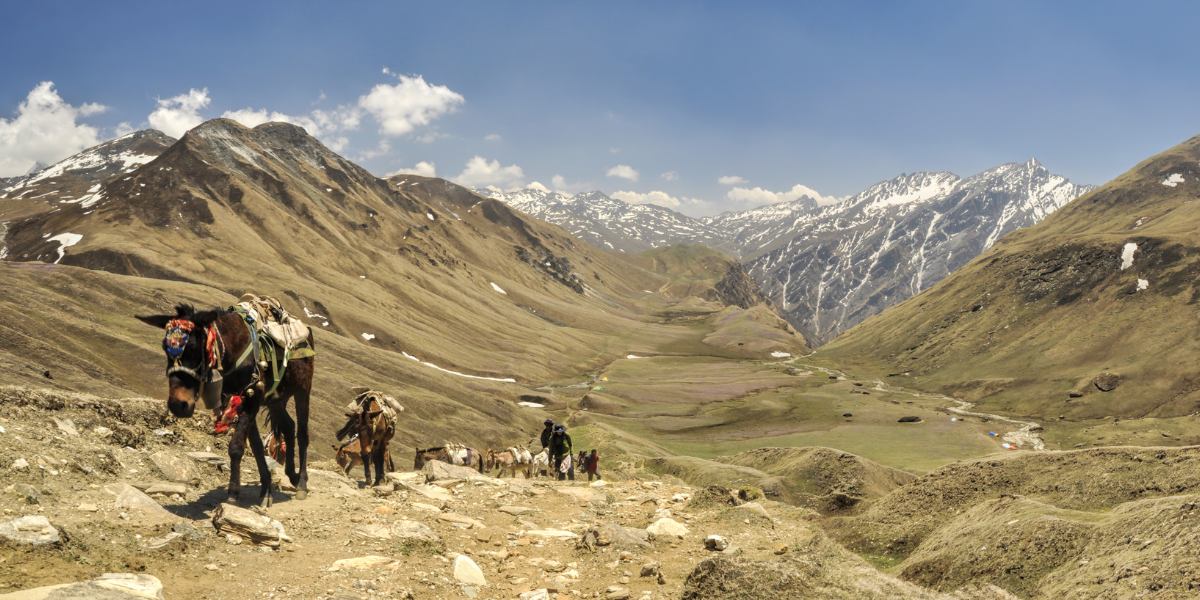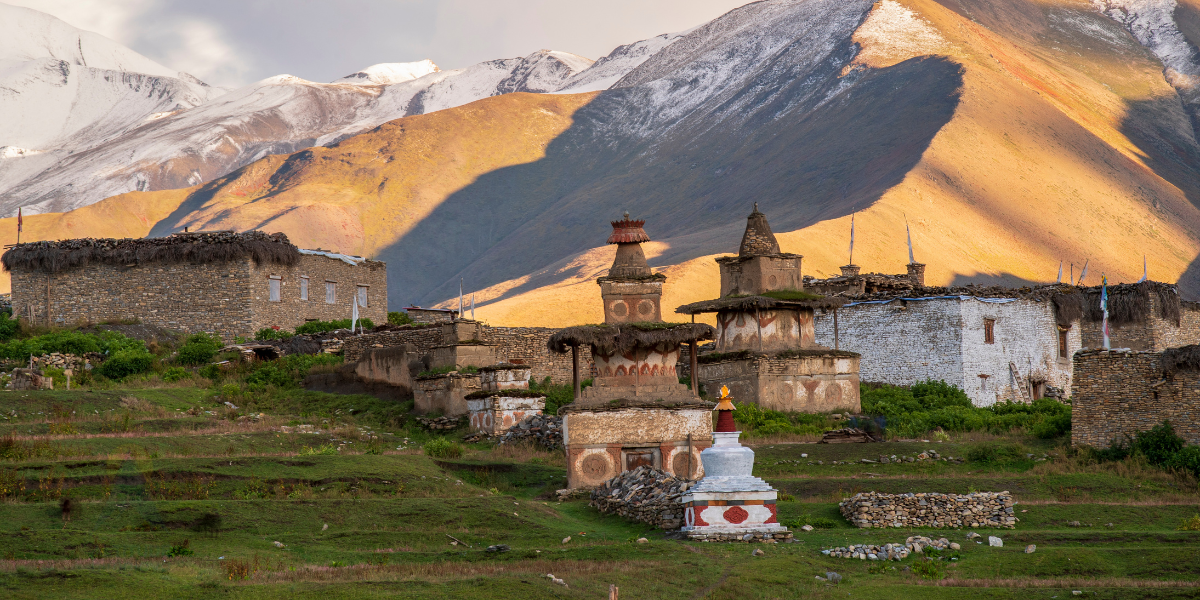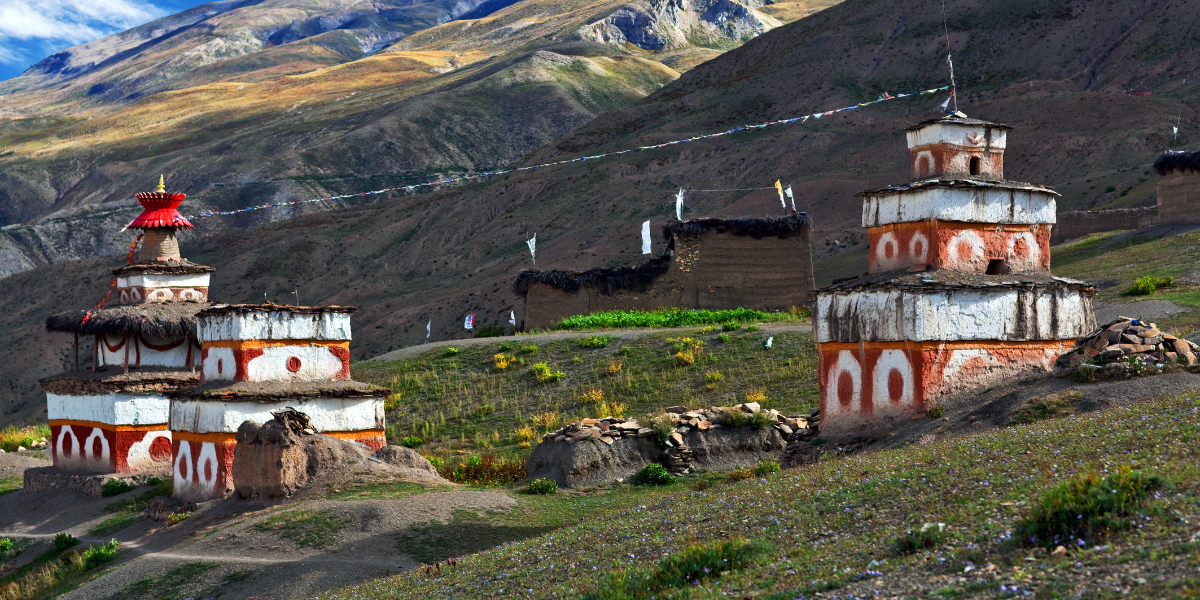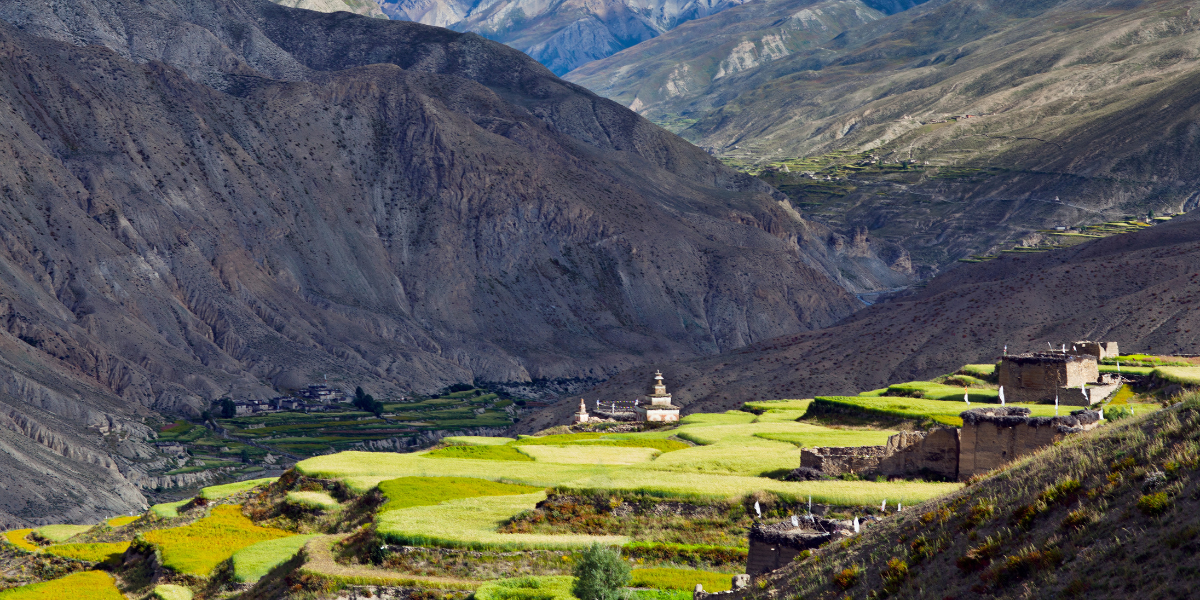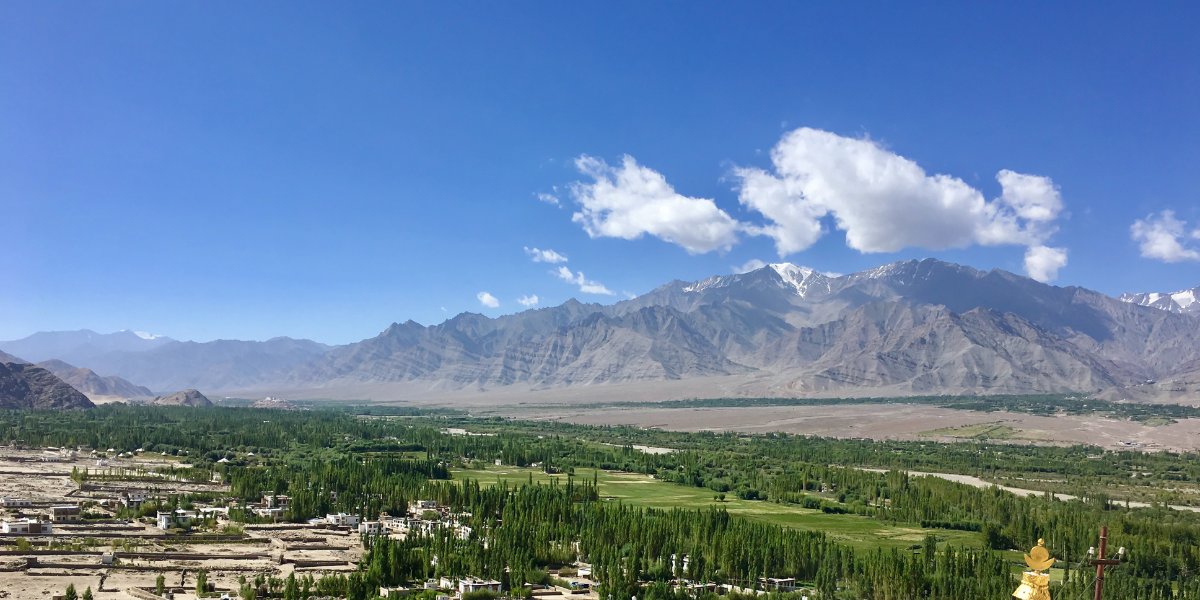In the harsh and remote terrain of Nepal’s Dolpo region, the elusive and gorgeous Snow Leopard (Panthera Uncia) is found, which is one of the rarest and most fascinating creatures of the Himalayas. Habitating in the high Himalayas of the Dolpo, a land of breathtaking nature and rich culture, the Snow Leopard, often called the God's Pet by the locals, is one of the most mysterious animals found in the world. This big cat is believed to represent the wild spirits that guard the highlands, which is a common belief of the Dolpo-pa (Dolpo people). The isolated region has become the sanctuary for these majestic creatures for centuries. These shy yet ruthless animals are usually found at an elevation of 3000 to 5000 meters above sea level, making Dolpo one of the most ideal places for them. Although sighting these majestic creatures is rare and difficult, knowing they roam in the area you are gives you a sense of connection with the untamed nature beyond any other travel experience.
Locally known as ‘’Heung Chituwa’’ or ‘’Saabo’’ in the Dolpa region, it is one of the most beautiful wild cats in the world. It is an exotic animal that many people would like to witness at least once during their journey in the Himalayas of Asia. These cats are shy and solidarity in nature, travelling and hunting alone, making them very hard to locate. Among the few countries, the Dolpo region of Nepal is one of the places that these shy animals call home. These big cats can also be found in Kanchenjunga, Makalu-Barun, Sagarmatha, Rolwaling, and Western regions of Nepal. It is a creature so rarely spotted that it is deemed to be mystical. Dolpo is one of the habitats of Snow leopards in the western region of Nepal.
Fun Fact: An image of a Snow Leopard is featured on the Nepalese 50 Rupee note, symbolising the animal's endangered status.
Snow Leopard Facts
Here are some facts about Snow Leopards:
|
Scientific Name |
Panthera Uncia |
|
Local Name |
‘’Heung Chituwa’’ Nepalese language |
|
Habitat |
12 countries of Central Asia, with Nepal included, Dolpo being one of the habitats of Snow Leopard. |
|
Altitude Range |
3000 meters to 5000 meters |
|
Weight |
22-55 Kilograms |
|
Length |
Body Length: 104-125 cm (Male) 86-117 cm (Female) The length of the tail varies from 78 to 105 cm |
|
Diet |
Blue Sheep (Bharal), Himalayan Tahr (Jharal), and Marmoths (Fau Muso) in Dolpo, Asiatic Ibex, Argali |
|
Lifespan |
Records up to 25 years but usually 15-18 years in the wilderness |
|
Social Structure |
Solitary in nature |
|
Mating Season |
January to March |
|
Reproduction |
93-110 days pregnancy |
|
Cubs |
Usually 2-3 days, rarely 4-5 |
|
Population in Dolpo |
Approximately 120 |
Snow Leopard Physical Features
The Snow Leopard, often referred to as the ‘’God’s Pet’’ in Dolpo, is a marvel of adaptation in the harsh and unforgiving environment it calls home. Known all throughout the world as the "Mountain Ghost," this spectacular creature is found in harsh environments in the mountains. It can fit in perfectly with the rocky terrain and snowy backdrop with its thick and lush fur, which has a pale grey-to-cream shade enhanced with dark rosette spots, allowing it to blend perfectly with nature. This remarkable predator weighs between 22 to 25 kg with a muscular body and a long tail to balance, which helps them to move gracefully across rough landscapes. Its fluffy tail, which is three feet long, aids in balance and provides warmth by wrapping around the animal's body on chilly nights.
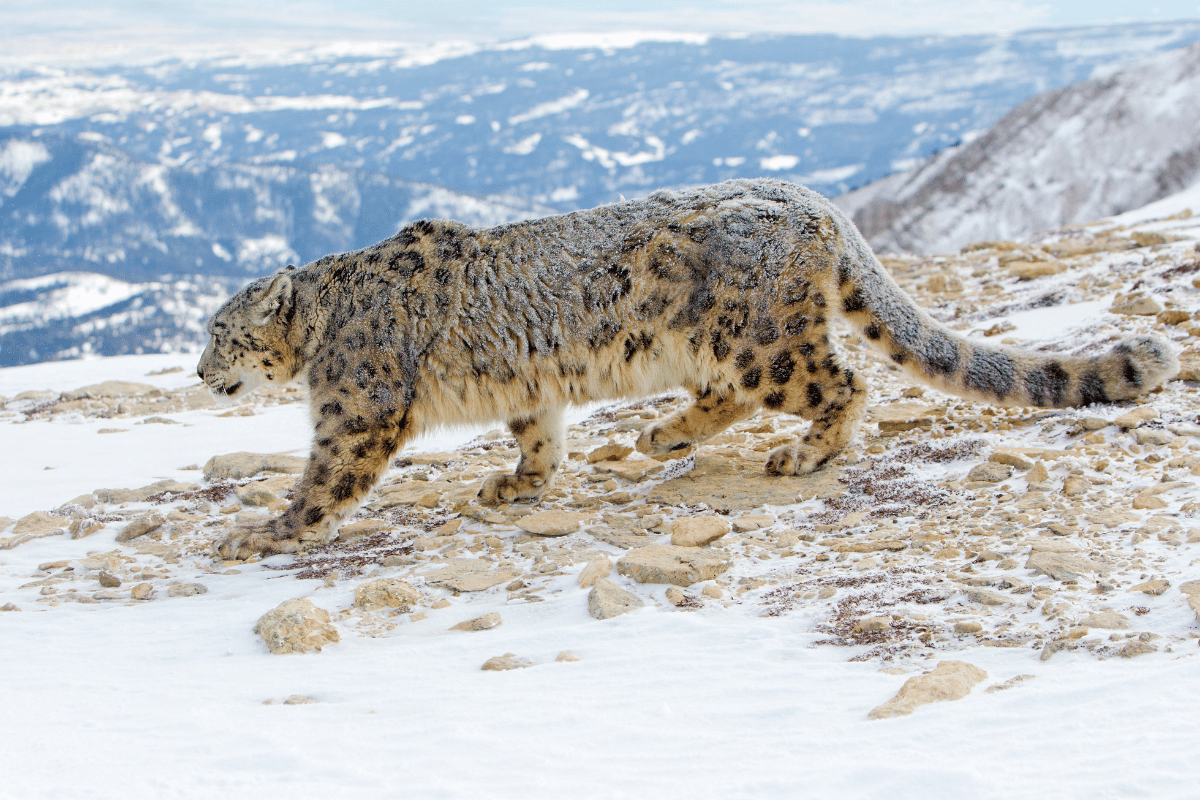
In addition to being incredibly adorable, its broad, wide nose helps to warm the cold air it breathes, and its expressive eyes, which are adapted for low light levels, enhance its hunting skills at dawn and dusk. Besides their physical features, they are shy and elusive and are known for their solitary nature. These cats are most active at dawn and dusk, which is called the ‘’Crepuscular activity pattern’’ by scientists. They regularly patrol home ranges that can cover hundreds of square kilometers in different regions according to their population, leading to their solitary lifestyle.
Snow Leopard Habitat
The snow leopard’s habitat is a wonderful blend of rough mountain landscapes, steep cliffs, and wide alpine/alpine meadows. These mysterious cats are found between 3000 meters and 5500 meters in elevation, perfectly adapted to the high-altitude environment of Dolpo. This rocky and rough ambiance provides the perfect opportunity for hunting, where they prey on animals like blue sheep and Himalayan Thar, where they thrive. The cold, dry climate features long winters and short summers that shape the environment to be arid and deserted with selective vegetation. The majestic cat takes advantage of these natural features to blend in with their surroundings and hide themselves from their prey, making them expert ambush hunters.
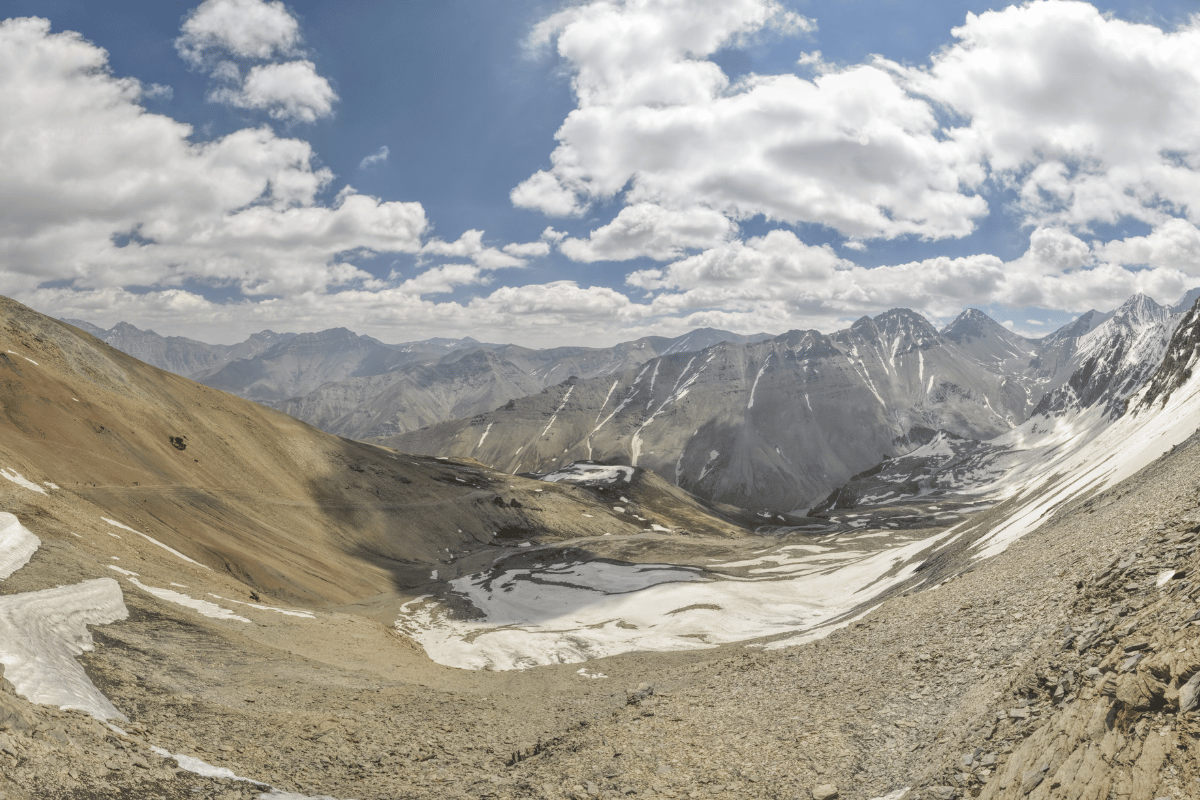
Even though Snow Leopards are not as violent as other animals, each one maintains a distinct territory. Male Snow Leopards typically have a home range that occasionally overlaps with that of the females. The area of the territory of Snow Leopard differs according to the availability of the prey; where prey is abundant, they have a smaller home range compared to where there is less availability of prey. The home range of a Snow Leopard is between 12-39 km². Snow Leopards are nomadic as they travel frequently in search of prey. They leave markings in their territory that prevent other Snow Leopards from moving in. Dolpo is a perfect habitat for snow leopards, who are elusive cats that like environments with lots of cover and unobstructed views of their prey. Almost 120 snow leopards inhabit the highlands of the Dolpo, making the region a suitable place to see them. A few settlements in the Upper Dolpo region, including Saladang, Bhijer, and Simen, can provide a base from which one might get a glimpse of these amazing animals.
Snow Leopard’s Life Cycle
The life cycle of snow leopards shows the simple yet complicated cycle of life of beautiful creatures in the harsh environment of Dolpo. Every stage of their lives, from cubs to mature cats, marks a unique set of challenges and striking developments that help them survive the difficult terrain of the Himalayas. One of the few occasions one might be able to see two adult snow leopards together is during mating season, which runs from January to March. The pregnancy period for a Snow Leopard usually lasts for 93–110 days. The mother, at the end of pregnancy, moves to a sheltered den site to give birth to her children, where she nurtures her cubs on her own. The cubs are usually born during June and July.
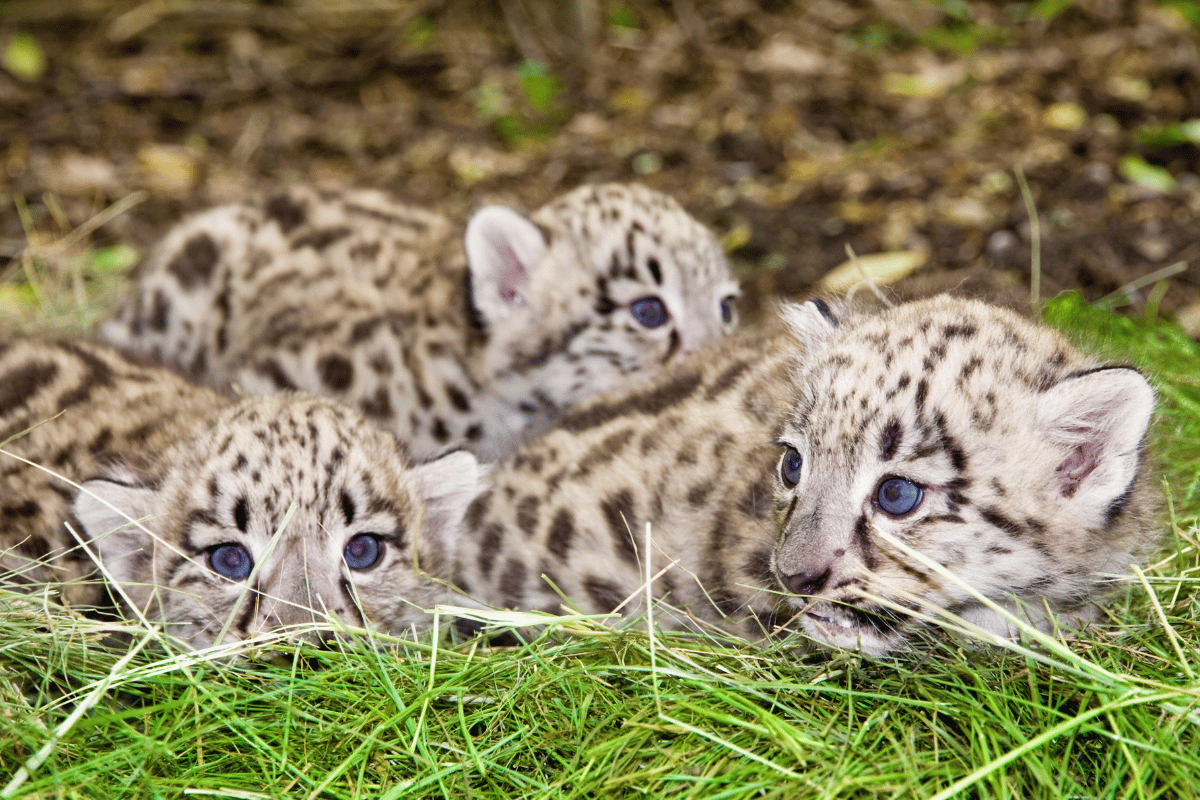
A snow leopard gives birth to 2-3 cubs in a litter but in some rare cases, 4-5 cubs are born at once. The cubs, after being born, don't open their eyes for 7 days; during this time, the cubs need full nurturing from their mother. The cubs can start eating solid food when they’re about 2 months old. Once the cubs are three months old, they follow their mother and learn survival skills such as hunting and other important skills. After the Snow Leopards are 18–22 months old, they leave their mother and start their independent life in the wilderness. There have been records of Snow Leopards living up to 25 years but the average lifespan of a Snow Leopard in the wilderness is approximately 15–18 years. It seems that female Snow Leopards become capable of reproduction by the age of 3, while male Snow Leopards reach sexual maturity by the age of 4, though additional data is required for accuracy. Knowing these animals’ life cycles uncovers the complex balance between growth and survival that allows us to appreciate their beauty even more.
Snow Leopard’s Diet
The availability of prey is an important factor that determines the existence of Snow Leopards. Snow Leopard’s prey mainly comprises Blue Sheep (Bharal), Asiatix Ibex (a large wild goat), Argali (wild Sheep species), and other small animals. Snow Leopards hunt a large animal every 8-10 days. These big cats eat slowly; it takes them around 3-4 days to finish their prey. They remain near the hunting site to defend the meal from scavengers like Vultures and Ravens. In some cases, Snow Leopards have been known to enter corrals and kill multiple livestock. During winter, these predators have a greater tendency to prey on domestic animals as the wild prey gets scarce due to the harsh weather. Apart from the suitable geographical structure and the abundance of prey like Blue Sheep (Bharal), Himalayan tahr (Jharal), and Marmots (Fau Muso), Dolpo is home to these graceful cats.
Conclusion
The challenge up there in high altitude seems impossible, but the resilience is nearly miraculous. For centuries, these snow leopards have thrived in the Dolpo region, and they are continuing their fierce legacy by passing it on to their young, preserving the raw beauty of nature. Also, snow leopards are a sign of a healthy environment; it shows how healthy the ecosystem as a whole is. Being at the top of the ecosystem shows how well the other components are doing. Truly, these are the gods’s pets, keeping an eye on the healthy environment where they live. Dolpo, being the most remote and isolated region, holds the power to shelter these majestic creatures, making Dolpo one of the few places where one can see the true beauty of the wilderness.
Frequently Asked Questions (FAQs)
Here are some of the frequently asked questions about Snow Leopard in Dolpo:
Can you spot a Snow leopard in Dolpo?
According to the most recent survey, there are around 120 Snow Leopards in Dolpo. These shy cats are highly elusive and well camouflaged in their territory, due to which the chances of casually spotting a Snow Leopard are quite slim. But it isn't impossible to spot this beautiful Snow Leopard; you might catch a glimpse if you’re lucky enough.
When is the best time to see a snow leopard in Dolpo?
During the months of May, June, November, and December, one might have a chance of spotting the shy Snow Leopard in person.
What are the chances of seeing a snow leopard in Dolpo?
The chances of spotting snow leopards are slim but not impossible because these solitary cats’ fur is perfect camouflage in their surroundings.
How rare is a Snow Leopard?
Snow Leopard is listed as one of the endangered animals by the IUCN (The International Union for Conservation of Nature) red list, with the total number of mature Snow Leopard being approximately 2,710-3,386 in the whole world. The population trend of Snow Leopards is decreasing.
Why are snow leopards so cute?
At a glance, Snow Leopards look like fluffier cats with their pale gray or cream colored with smoky gray or blurred black markings, which makes them look extra appealing to cat lovers. No matter how cute they are, they shouldn’t be disturbed.
What is the main diet of Snow leopards?
The main diet/prey of Snow Leopards is Blue Sheep (Bharal), Asiatic ibex (a large wild goat), and argali (wild sheep).
What is the lifespan of a Snow Leopard?
The lifespan of a Snow Leopard has been recorded to be up to 25 years in length but life in the wilderness is quite hard, due to which the lifespan of the Snow Leopard in the wild is likely to be 15–18 years.
Why are Snow leopards called ‘’Ghosts of the Mountains”?
The Snow Leopard is called the Ghosts of the Mountains because of their elusive nature, rarity, and mystery surrounding these spectacular creatures. Snow Leopards are so rare to find and while the tales of them are widespread, even if someone manages to find the Snow Leopard, it would be for a fleeting moment before they disappear right before one’s eye with their camouflage.
How fast can a Snow leopard run?
It has been documented that a Snow Leopard can travel across 27 miles of open desert in a single night.
Are Snow Leopards shy creatures?
Snow Leopards are extremely shy and solitary creatures. They are often seen alone, even while hunting.
Do Snow Leopards attack humans?
No, there isn’t a record of the Snow Leopards attacking humans. Even in the instances that they’re feeding, they run away from their prey rather than attacking the humans. But it is still recommended to not disturb the Snow Leopard.

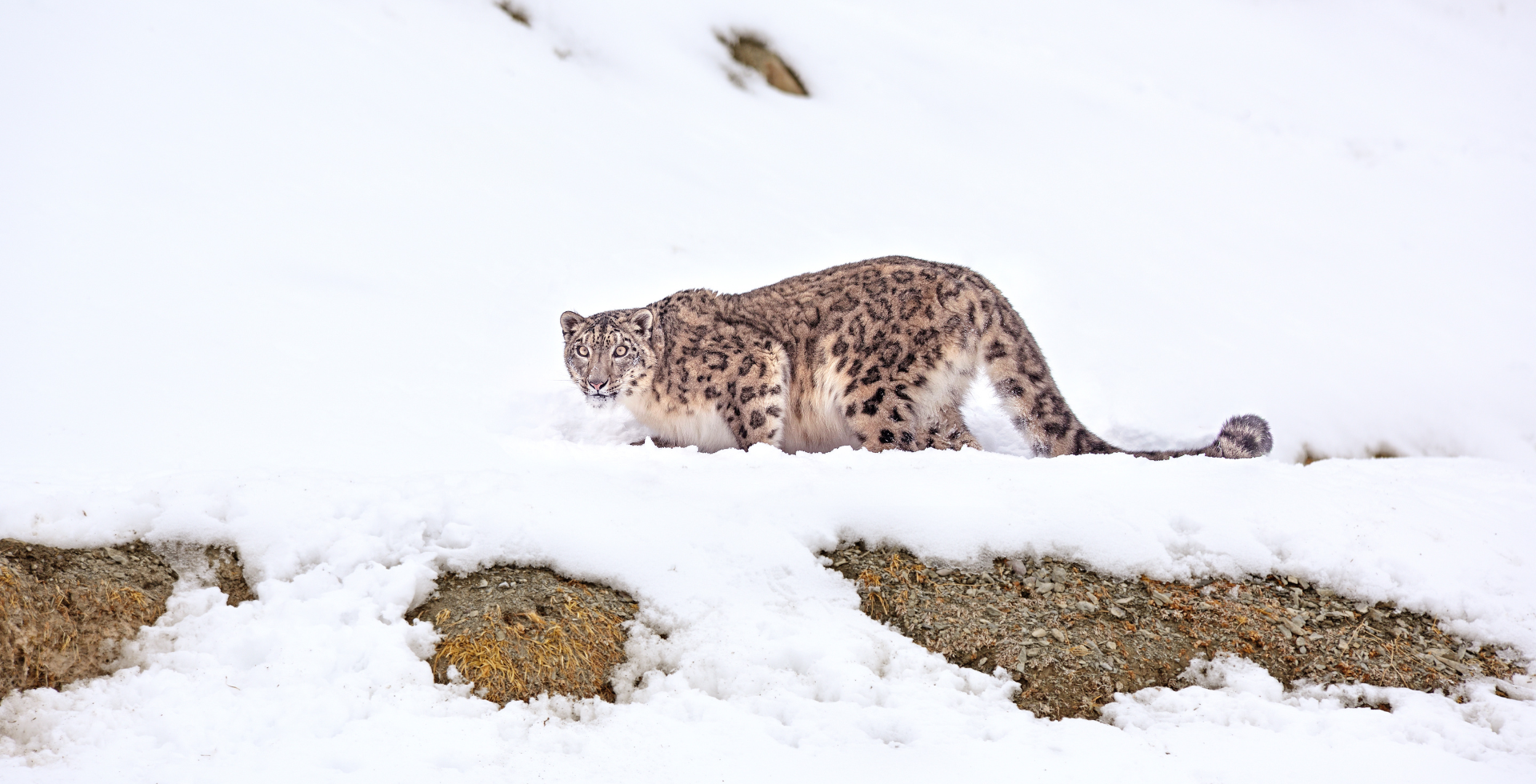
 Kriti Maharjan
Kriti Maharjan
